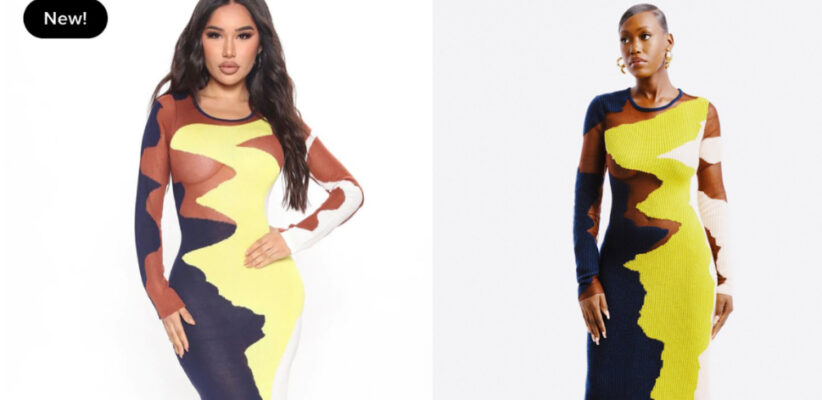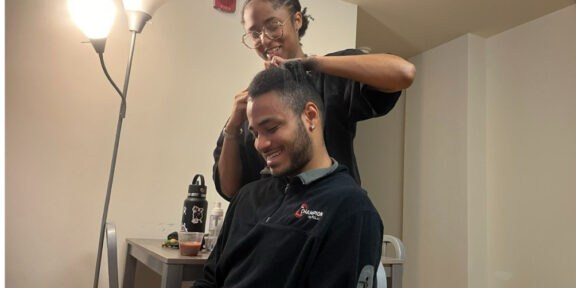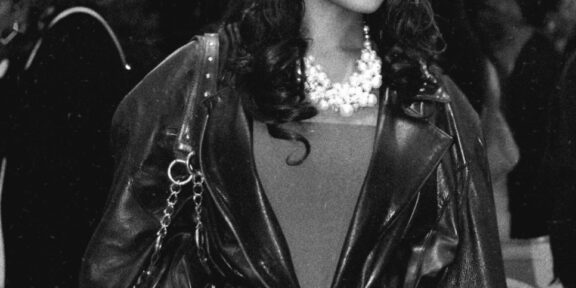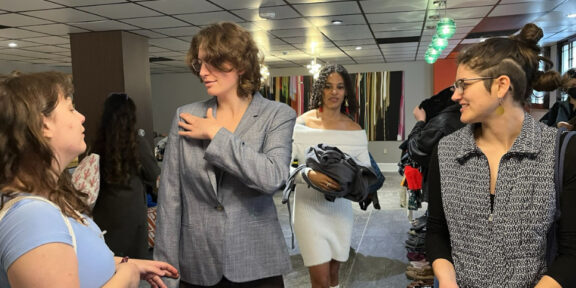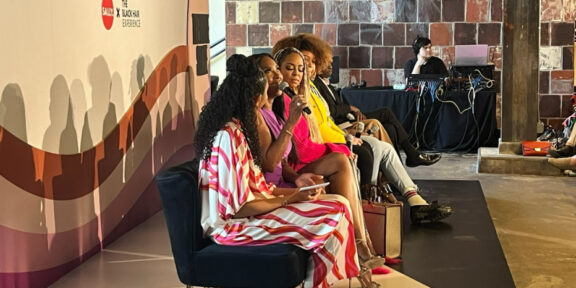By Makenna Underwood
Fashion Nova, a well-known fast-fashion company, is once again facing accusations of design theft.
The retail company has been accused of stealing a design from Hanifa, a global luxury brand founded by Anifa Mvuemba, a Black designer.
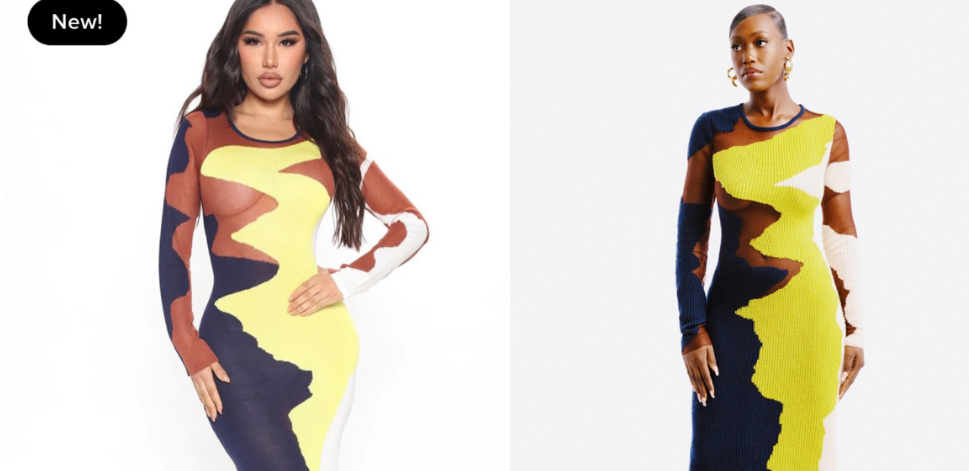
A side-by-side comparison of the Fashion Nova (left) and Hanifa dresses. In 2022, social media users called out Fashion Nova for allegedly stealing a design from Hanifa. (Photo Courtesy of Fashion Nova and Hanifa.)
This isn’t the first time Fashion Nova has been accused of copying a design from Hanifa. In 2022, The company came under scrutiny for its Sahara Sweater Maxi Dress, which had the same silhouette and color-blocking elements as Hanifa’s Jax Knit Gown.
This time, Fashion Nova’s Symone Sweater Maxi Dress resembles the same ombre effect and fabric as the Hanifa Taliah Knit Dress.
The accusations have highlighted conversations on social media about a broader issue within the fast-fashion industry—larger companies allegedly copying designs from smaller designers, exploiting the creative labor of independent designers, and violating intellectual property rights in the pursuit of profit.
Camille McCallum, founder of Black Woman on a Mission, an e-commerce clothing brand celebrating “the resilience, strength, and perseverance of Black women” through clothing and educational opportunities, experienced a similar situation.
McCallum’s brand faced a trademark infringement when products bearing the company’s name were found in Home Goods stores without a contract. The products were traced back to a third-party company that mass-produces for major retailers using licensed digital art.
McCallum was able to halt distribution because she had a trademark. She used the additional compensation she received from the company to start a scholarship fund.
Though McCallum resolved the design theft, she said things like this often happen to smaller designers without resolution.
“It’s happening every day. There are so many ways and so many essences that we can cite of things being kind of ghetto until proven fashionable,” McCallum said.
Though McCallum said designers don’t inherently believe their designs will be copied, she still emphasized the importance of legal protection through “filing copyrights” on all designs, logos, and brand marks “that could be seen as repeatable and have some value.”
She also urges consumers to buy ethically when it comes to shopping for fashion items.
“I tried to go the sustainable route. I shop secondhand a lot, and I also use clothing rental subscriptions, so I have a Rent the Runway subscription, which I use religiously,” McCallum said.
Ashley Cloud, a Howard alumna, runs The Cloud Law Firm, PLLC. It handles cases for fashion designers, creatives, and entrepreneurs who run businesses in tech, hospitality, lifestyle, and other service-based industries.
Cloud suggests that if Hanifa were to pursue legal action, they might not have a sustainable case since the ombre patterns or the dress’s cut are unoriginal.
“There are a lot of things that make the Hanifa dress original, right? The ombre effect, the cut of it. Unfortunately, in an intellectual property land, those things separate are not original,” Cloud said.
Cloud advises focusing on building a solid brand rather than pursuing legal action.
“Let’s focus on building out your brand. Let’s focus on building your following. It’s such brand loyalty that they will be your eyes, and they can say, ‘Oh, look at this’. They’re copying, and [it] draws so much attention somewhere even though you can’t sue them,” Cloud said.
However, a Washington-based lawyer, Collen Clark, said that legal action is only one part of addressing design theft.
“While legal action can provide some remedy for design theft, it does not address the larger issue at hand— the systemic exploitation of smaller designers, particularly those from marginalized communities,” said Clark.

